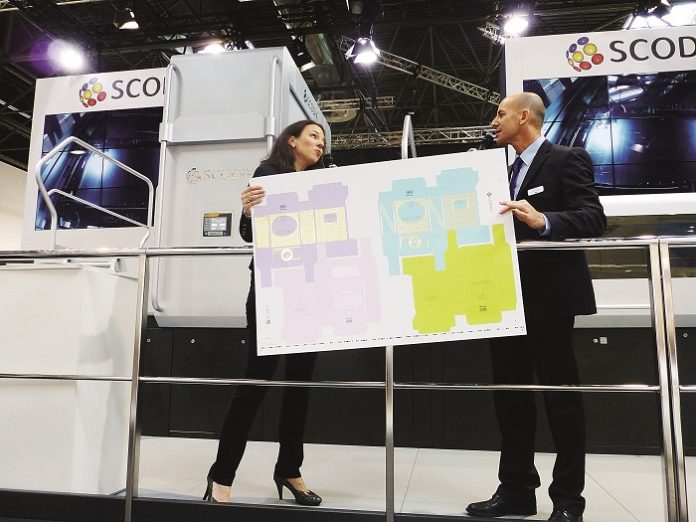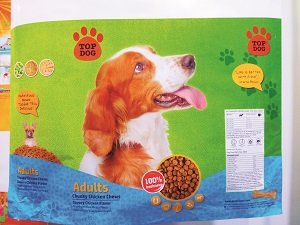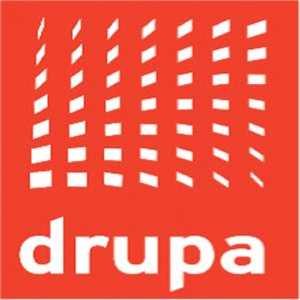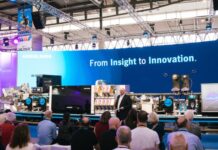
This year’s ‘Olympiad’ of the printing world was a clear sign of a digital takeover and the spread of packaging across the halls marked progress towards industrializing technologies that in 2012 were in niche applications or at the concept stage. Likely industry-changers for packaging sprang from expected sources, others from lesser-known names, but one idea worth backing as a winner at drupa 2016 was the brainchild of a new player in the emerging sector of virtual 3D packaging design.

press in 2017
A light show, music, film, dancers, drummers… Benny Landa threw everything into making his Nanographic technology ‘baby’ the talk of drupa 2016 and thousands poured into the hall to see an S10 spit out paper sheets printed in glorious technicolor. Several times a day, a packed theatre saw the inveterate showman in person drive home his message that digital printers need not choose between high speed and high quality because a Landa offers both at a market-low price; that without exception the S10 is “cost competitive with every printing press in the world,” achieves offset quality on any paper at BI speeds of up to13,000 sph, 8-color, giving “the widest color gamut in the world.”
But all the theatrics in the world cannot persuade a printer then and there to part with a mountain of cash, which suggests deals Landa completed at the show, reportedly worth €450 million in total, involved longstanding converts: companies such as German folding carton printer Colordruck Baiersbronn, the first S10 customer and beta site in Europe; ZRP, of China, a first user in Asia Pacific; and Grupo Gondi, of Mexico, who leads Landa’s digital march into Latin America.
In the UK, flexible packaging printer Reflex Labels is a paid-up customer waiting for its 656 feet a minute (200 metres a minute) Landa W10 Nanographic press to roll off the line in Israel, four years after buying into the concept at drupa 2012. Since then Reflex director Will Parker has travelled often between Reflex, in Mansfield, and Tel Aviv to be involved in the final development stages of a press he considers “unique and far ahead.”

“The price per metre/per tonne is competitive and disturbing to the market,” says the third-generation printer and a drupa visitor since age five. Whatever the price, which Parker does not disclose, he thinks the W10 “a good investment” for a family business with a turnover of nearly £100 million (approximately Rs. 1,000 crore), 14 sites and 128 staff. The Landa allows the customer not to be inconvenienced by stock holding and waste, and “will create value and opportunities in packaging that labels has become used to,” he says, and potential customers have expressed their interest since 2012 including last month “one of the largest companies in the world.”
The plan is to build a focussed business unit around the Landa and make it the centre of a “visitor experience.” The location for this global reference site for Landa is undecided but will require a high rainfall because Reflex has committed to using rainwater harvested and filtered for the Nanographic water-based inks.
Software used in the gaming world has been customized for packaging design, development and marketing by US-based Creative Edge Software. The newly signed-up three-year sponsor of the Pentawards caused quite a stir with a virtual prototyping tool designed to speed up the production of mockups and time to market. IC3D creates 3D-effect moving imagery and convincing photo-realism with potential cost benefits for brand owners and suppliers, says the new player in an emerging digital market segment for packaging. Printing and prepress professionals are welcoming an alternative to what’s on the market with new capabilities, says company CEO Nick Gilmore. He told Indian Printer & Publisher that brand owners and creatives were the initial target but drupa had opened the door to new target customers.
The system is intended to complement and work alongside Esko products and in a ‘world first’ for ray tracing, integrates cloud sharing via a platform called Opsis. Ray tracing is the key to the dynamic user experience and photo-realistic imaging, producing the effect of reflected and refracted light on a glass bottle and the contents, for example. Gilmore showed how easy it is to add a label and virtually shrink a sleeve label with accuracy. Images created in 3D can be manipulated with 2D images to show the impact of a design on-shelf. In advertising and marketing, the high quality of digital imagery gets around the need for professional studio shots.
“Brands are starting to take control of prototyping,” observes Gilmore. He says global drinks brand Diageo, an early adopter, has found experimental sampling generated by acrylic 3D printing can bring digital efficiency to getting new products to market. Customers also include Swiss chocolate brand Lindt and Molson Coors beers.
Tutoring videos are freely available and an adept Illustrator user can be up-and-running with the software in a day, says Gilmore. The complete system bought outright costs US$ 9,950 (£7,000) and the simpler version for folding cartons sells at US$ 2,750 (£2,000).
An alternative to the common barcode for flexible packaging was revealed that used functional printed electronics to spread information, repeatedly and invisibly, over the whole surface area of a pouch or sachet, with benefits for shoppers and retailing because every part of the printed material is readable by a smartphone or industrial scanner.
 The Stealth Code concept was developed with Swansea University in Wales and patented in America by Digimarc. It was presented by Goliardo Butti, CEO of Italian company Bee Graphic, a products integrator for the packaging and graphics industries, and displayed by Uteco, the flexographic printing company who produced the samples. The discreet and dynamic substitute for consumer barcodes can include links to the brand owner’s website. Brand communication can be refreshed with new messages and recipe suggestions, Butti explained.
The Stealth Code concept was developed with Swansea University in Wales and patented in America by Digimarc. It was presented by Goliardo Butti, CEO of Italian company Bee Graphic, a products integrator for the packaging and graphics industries, and displayed by Uteco, the flexographic printing company who produced the samples. The discreet and dynamic substitute for consumer barcodes can include links to the brand owner’s website. Brand communication can be refreshed with new messages and recipe suggestions, Butti explained.
Offset and digital print suppliers in the folding carton sector are target customers for the newly launched E106 enhancement press by Scodix. The B1 (1060 x 760 mm) format machine can process up to 4,000 sph (sheets per hour) and is suitable for short to medium-length runs. It offers nine applications in the one system, setup takes ‘one to two minutes,’ proofing is reduced to a couple of sheets and camera inspection gives attention to every sheet that’s produced, explained Scodix product manager Yaron Mazor during a live demo. The speed and quality of the output and the potential for significant savings “keeps customers close to you,” said Mazor.
The Soma Optima 2 CI flexographic press allows customers to make a new machine their own by choosing a color and even a name for it. The award-winning design has considered the operator with wide-opening doors to help make sleeve changeovers quick and easy. Five machines were sold before the official launch at drupa, going to Equador, South Korea, Sweden, Portugal and a Russian-speaking country. Company spokesperson Stepanka Pospisilova commented that interest in Optima 2 is also coming from India. Existing owners of the small Optima now have a chance to expand, she added.
The Optima 2 is equipped to reduce bouncing, generated by the presence of non-printed areas across the substrate. Thanks to bounce control, the optimum set speed can be maintained. The speed, which was limited to 400 metres a minute during an entertaining live demonstration, can reach 500 metres a minute. Inspection and validation data can be captured and uploaded to the internet so overnight activity can be checked remotely.

CEO of Bee Graphic
Digital Metal technology developer Kurz, of Germany, released a new DM-Liner machine for processing B2 format sheets.“It makes our toner-based Digital Metal technology interesting for the packaging sector,” says product manager Stephanie Schmidt. Its first global customer, UK-based printer NXP Europe, has waited for this moment to expand into the packaging business. The firm located in Tunbridge Wells has run a small format machine since December 2015 to build up a customer base. In that time it has gained expertise in the production of high-gloss metallic effects in razor sharp images, customization, creative color overprinting and holographic effects.
Packaging professionals cannot let the the grass grow under their feet. With every four years that pass, suppliers to the printed packaging sector have moved technology forward by leaps and bounds. Anyone in development and production that thinks drupa is just for printers needs to think again.
Packaging Soth Asia is a cooperating media partner for drupa 2016 which was held from 31 May to 10 June at Dusseldorf, Germany











